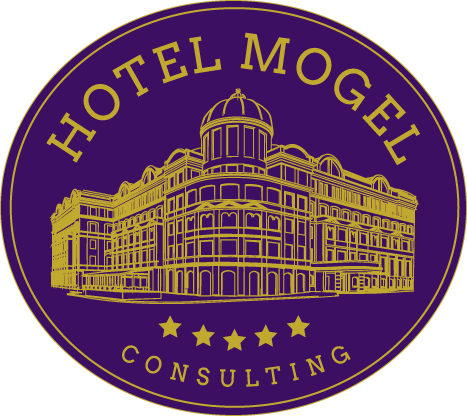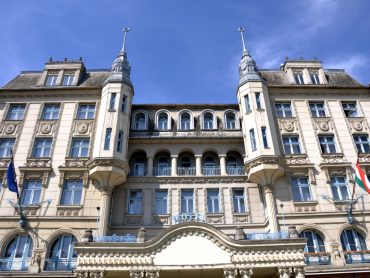This New Integration Signals the Next Phase of Hotel Labor Controls
In speaking with hotel owners and management company executives, staffing and labor costs are perennially two of the top concerns. Indeed, this is hardly anecdotal as when AHLA’s CEO Chip Rogers referenced survey data at ALIS this past January indicating that 85% of its member properties stated they were ‘somewhat or severely understaffed’.
Tech can help, of course. But once you streamline the on-premise systems to smooth out the intricacies of modern hotel operations, where do you go from there? Fortunately, a new type of data integration between labor management and business intelligence (BI) software highlights what this next step should be by providing more actionable insights and predictive power to a series of increasingly complex tradeoffs at the corporate level.
Growing a Hotel with Ongoing Labor Headaches
Right now, 2023 has its headaches. Inflation is eating away at net operating income which can curtail funds devoted to future product improvements. Then there’s the collective challenge of recruitment, shortages and high turnover rates, all of which compound to make labor a limiting resource when thinking of new services or developing experiential offerings to differentiate the brand.
It follows from these converging factors that smarter labor management should be top of mind for every hotel executive and owner as the principal engine for continual business growth. And for that, ‘smarter’ means the adept use of platforms and systems to monitor, forecast, compare and nimbly reallocate labor in both a cost-efficient and a profit-effective manner.
The goal of maximizing profits is, however, often at odds with having a scrupulous eye towards cost savings. In years past, siloed systems showed you enough to optimize for one of these objectives while likely sacrificing the other. Now, there’s also a need to grow every profit center as reflected in the total revenue per available room (TRevPAR) metric in that it’s all about how much a guest uses at a property.
But how can you build other revenue streams when the core business – the guestrooms then F&B, meetings and so on – are a constant challenge to operate? A holistic approach, as granted by feeding labor and team member data into BI is what executives need to optimize for both cost efficiency and profit effectiveness.
To that end, we were invited for an in-depth discussion with Steven Moore and Adam Glickman, respectively the CEO and VP of Brand Strategy at Actabl, to discuss how the company is meeting this present-day need for smart labor management while still growing TRevPAR.
As a provider of a suite of operations and asset management solutions, Actabl has recently completed a full integration between Hotel Effectiveness – the company’s labor management and optimization platform – and ProfitSword – its enterprise BI platform – ostensibly an industry first in terms of the nature of this interface.
Balancing Labor Costs and Profits via BI
Through our chats with executives over the years as well as through our asset management assignments, one pervasive hospitality lesson we’ve gleaned is: sometimes operators have to spend a little bit more to get a whole lot back. And yet in today’s economic climate, every dollar counts and it’s difficult to justify extra expenses on faith alone.
Glickman showed us one potential way that tech can solve this conundrum wherein ProfitSword analyzed stayover and checkout room cleaning metrics fed in from Hotel Effectiveness that was quantifying costs across an entire portfolio. To be strictly cost-efficient, you would think that foregoing stayover cleans is the way to go in 2023. And yet, throttling this service strains checkout cleans, as measured in hours per occupied room (HPOR), to the point where housekeepers can’t turn around every guestroom in time for resale, thus lessening the hotel’s profit effectiveness.
“To stayover clean or not to stayover clean?” With this latest labor-management-to-BI integration, hoteliers can now circle back to an in vogue question like this with highly precise data, letting each executive team factcheck its convictions.
Predictive Power for Operational Efficacy and Financial Growth
Beyond this use case, this new integration further eliminates the inefficient monotony of manual entry or error creation in financial reporting. What impressed us to the point of writing this article, though, was how such data can allow hotel companies to be more predictive with their forecasting – that is, incorporating complex calculations under the hood to make sense of the cacophony of data.
It’s this predictive power that enables a hotel company’s limited supply of labor to actually have bandwidth to activate new services, especially for groups that are trying to roll out new SOPs brand-wide but must first look at property comparisons to standardize key variables like scheduled labor, actualized labor, time clock data, overtime pay and outsourced contract team usage.
“When you automatically merge labor data in real-time with corporate-level financial reporting, comparing budget versus actual becomes far more accurate,” commented Moore on this point. “And it’s this predictive quality that raises the confidence for many other operational improvements while also opening the doors to new capex or external investments.”
With chat-based GPTs and image-centric GANs stealing the limelight, we often forget that hotel tech vendors are continuing to make incredible strides behind the scenes to help hotels use the latest tools to continually upgrade their products. On this note, Moore shared with us some other new features within the product roadmaps for Hotel Effectiveness and ProfitSword, with this latest integration as just one spoke on the wheel of continuous improvement.
The Manager Side of Managing Labor
Yes, labor, particularly in the housekeeping department, is very often the single biggest expense for operating a hotel. But let’s not forget the managers and supervisors who are using all these various platforms. That is to say, if you want good teams that stay with you for the long-term – and avoiding churn which is a huge cost in its own right – you have to factor in the ways that admin-level teams interact with technology as part of the employee experience (EX).
On this front, you may have read some of our previous articles calling for more consolidated systems, not just for richer data sets but so that employees can focus their attention and don’t get overwhelmed by having so many applications open all at once.
When you start to consider EX as an important objective, then a subgoal would be to reduce the total number of platforms a hotelier must login to on any given day in order to reduce their jobsite stress. The statistic that best illustrates this issue comes from a study published in 2019 by the University of California, Irvine, which found that the average office worker switches between different screens or tasks 566 times per day – the more switching, the more short-term memory lapses and more inefficiencies.
We’re highlighting Actabl here because improving hotelier EX has been one of their pursuits as well, with lots of space for future hotel productivity via the rollout of new features within consolidated systems. Three of note that Glickman and Moore identified during our time with them include:
- Single sign-on (SSO) to reduce time spent logging in and switching screens
- Enabling more fluid team communications and ability to seamlessly shift swap
- Flagging actionable insights across all consolidated platforms so that onsite managers know where to focus their efforts and for corporate-level managers to know where the gaps are
The Bottom Line
While the two of us have introduced a lot of acronyms here, this alone should tell you about how complex the world of hotels have become. It doesn’t have to be that way if you have tools that can help to streamline the data into a digestible format.
In order for owners and executives to think ‘big picture’ about goals like growing TRevPAR, they must first have a clear path to optimizing the core services at a hotel, especially when it comes to smarter labor optimization. And nowadays, that can only happen at the corporate level as enhanced by BI with an ever-expanding consortium of integrations to allow executives to easily digest lots of data to more accurately answer big questions.
Hoteliers must now think beyond pure cost efficiencies and look at bigger goals like reducing turnover via better software EX or how new services will enrich the guest experience. Only then will a hotel organization realize tremendous business growth and using the latest software tools is a great next step.




